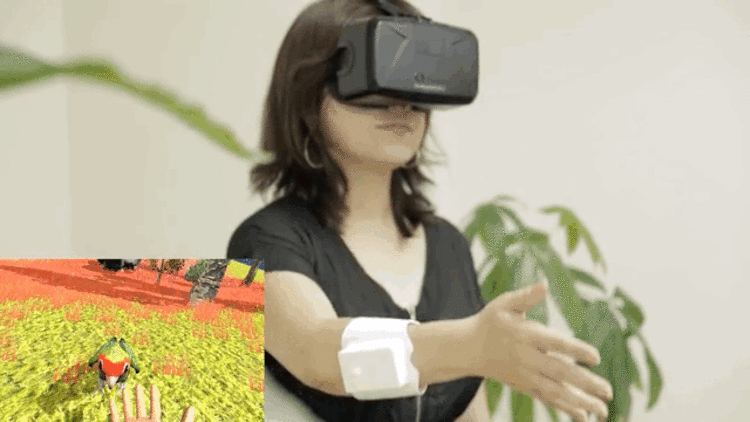
In this week's Abundance Insider: Tactile virtual reality, Styrofoam-munching mealworms and an unbeatable Rock Paper Scissors robot.
Cheers,
Peter, Marissa, Cody, Maxx, Kelley and Greg
P.S. Send any tips to data@diamandis.com, and send your friends and family to this link to subscribe to Abundance Insider.
This Unobtrusive Arm Band Will Let You Feel Virtual Reality
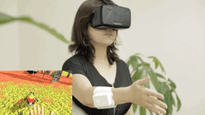
What it is: H2L has just announced the UnlimitedHand, a VR armband packed with haptic sensors and multi-channel electronic muscle stimulators. While exploring a virtual environment, the armband sends electronic pulses through your muscles to simulate touching, pinching, grabbing, stroking and even minor pain.
Why it's important: The convergence of sensors and virtual worlds enables increasingly lifelike experiences. This armband digitizes a very physical experience: human touch.
Spotted by Peter Diamandis
Hulu Dives Into Virtual Reality

What it is: Hulu has announced an upcoming virtual reality application that enables users to experience its 2D and 3D content in a unique viewing environment optimized for VR technology. Starting this fall, viewers can transport directly to the blue couch in Jerry Seinfeld's apartment to watch Seinfeld, or another living room setting to watch Difficult People.
Why it's important: Hulu has already digitized and dematerialized physical rental stores like Blockbuster with its online platform, as well as traditional cable subscriptions and boxes. With this entry into VR technology, it's dematerializing the living room. As Julian Eggebrecht, Hulu's VP of Device Platforms, explains, "Providing viewers with dynamic environments of their choice and themed around their favorite shows provides a whole new level of engagement."
Spotted by Cody Rapp
On the Edge of Automation
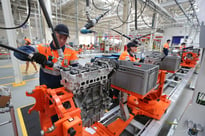
What it is: Venture capitalist Steve Jurvetson discusses the future of automation. Among his prognostications is that 90 percent of people will be unemployed in 500 years, thanks to automation; instead of doing busy work or a "physically repetitive thing for a living," we'll be involved in information or entertainment. "We'll live off the production of robots, free to be the next Aristotle or Plato or Newton," he explained. "Unless we're miserable without doing busy work."
Why it's important: A well-informed, abundance-focused approach to the effects of increasing automation and the future of work. Jurvetson also underscores the importance of finding and funding entrepreneurs who are thinking big and solving global problems -- despite their inherent risk.
Spotted by Marissa Brassfield
Brain-Computer Interface Enables Paralyzed Man to Walk Without Robotic Support
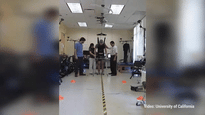
What it is: University of California at Irvine researchers have created a brain-computer interface technology that enabled a paraplegic man to walk completely unaided for a short distance. The EEG brain-computer-interface system enables the brain to bypass the spinal cord and send messages directly to the legs.
Why it's important: This paraplegic man was initially trained to control an avatar in a virtual reality environment, which in turn generated data for a custom computer algorithm. As computers, virtual reality and machine learning continue to advance and converge, we'll soon have the tools to solve nearly every condition.
Spotted by Peter Diamandis
Plastic-Eating Worms May Offer Solution to Mounting Waste
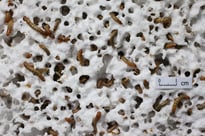
What it is: Stanford researchers have confirmed that the humble mealworm can subsist on a diet of Styrofoam and other types of polystyrene, thanks to microorganisms in its guts that break down the plastic. Not only can the mealworms biodegrade plastic that we previously thought was non-biodegradable, but the Styrofoam-munching mealworms were as healthy as those that ate a normal diet, and their waste is even safe enough to use as crop soil.
Why it's important: We discard 33 million tons of plastic every year in the U.S. alone, less than 10 percent of which gets recycled. Mealworms could take care of a significant chunk of that non-recycled plastic. The researchers will next focus on whether the mealworms can digest other waste like polypropylene, microbeads and bioplastics.
Spotted by Ian Pitchford
Rock Paper Scissors Robot Wins 100% of the Time
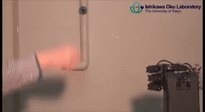
What it is: Japanese researchers have created a robot that can play Rock Paper Scissors better than any human, every time. Technically, the robot doesn't play by the rules: it uses a high-speed camera and electronic reflexes that are faster than a human's to identify the opponent's hand shape and then play the corresponding winning move.
Why it's important: This robot's technology has tremendous implications for natural human interfaces. Imagine the handshake -- easy for humans, but difficult for robots. Future robots using this technology, including military and industrial exoskeletons, could have real-time, lifelike responses.
Spotted by Marissa Brassfield
Why Quirky Went Bankrupt
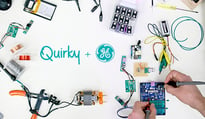
What it is: Earlier this week, Quirky filed for bankruptcy. In this article, Bolt founder and partner Ben Einstein analyzes the crucial misstep that led to Quirky's downfall: too-lofty ambitions combined with a lack of iteration and lack of branding.
Why it's important: Dreaming big isn't a guarantee for startup success -- customer-centrism and experimentation are absolutely essential to navigate today's world of exponential change.
Spotted by Peter Diamandis
Virtual Reality Put Me Face-to-Face With Bill Clinton In His Office

What it is: Thanks to a new experience created for the Clinton Foundation by Matter Unlimited and Felix & Paul Studios, you can interact face-to-face with former U.S. president Bill Clinton in his office. In the eight-minute experience, Clinton discusses his foundation's work in East Africa and introduces you to local entrepreneurs.
Why it's important: Virtual reality's immersive nature brings communication to life. This experience humanizes Clinton far more than any standard news update or highly produced video -- and is a powerful glimpse into the future of how we'll connect.
Spotted by Cody Rapp
By 2050, Human-On-Robot Sex Will Be More Common Than Human-On-Human Sex, Says Report

What it is: Futurologist Dr. Ian Pearson has just announced some surprising predictions on human behavior. In the next 35 years, human-on-robot sex will be more common than human-on-human sex; what's more, in the next 30 years, most people will have some form of virtual sex as casually as they browse porn today.
Why it's important: As robotics and virtual reality become mainstream, we'll see more diverse consumer offerings, accommodating nearly every interest.
Spotted by Peter Diamandis
Solar Cells Will be Made Obsolete by 3D Rectenna
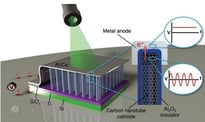
What it is: Researchers at Georgia Tech have created a nanoscale rectenna -- half antenna, half rectifier -- that transforms infrared and solar light into electricity. This rectenna can achieve 40 percent broad spectrum efficiency at one-tenth the cost of conventional solar cells, and the researchers forecast up to a 90 percent efficiency.
Why it's important: Optical rectennas were first proposed over 40 years ago, but fabrication challenges barred their production at the time. Today, as sensors, chips, and materials science have continued to exponentially grow, researchers are able to make the impossible possible. This particular innovation could make solar energy significantly cheaper and more efficient.
Spotted by Marissa Brassfield
What Water on Mars Means for the Future of Space Exploration
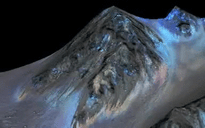
What it is: This week, NASA confirmed the presence of saltwater on Mars. In this Singularity Hub article, Sarah Scoles analyzes the four game-changers from this discovery.
Why it's important: This discovery enables future space exploration. The ingredients in saltwater are the same as those in rocket fuel, and desalination can transform water into a resource for future travelers.
Spotted by Marissa Brassfield
Work in Transition
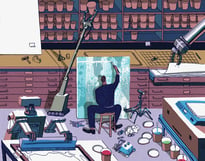
What it is: As machine learning continues to improve, where do humans fit in? A recent automation study from the University of Oxford indicates, among other insights, that work will likely migrate toward the tasks that humans are uniquely skilled at -- innovative thinking, social skills, flexibility and creativity -- while all rules-based, predictable work will be done by machines.
Why it's important: As Peter often says, the road to abundance will be bumpy. Technology will displace some jobs, but it'll also create new ones. This study aligns with the notion of human-technology teamwork that Peter and Dan Sullivan discuss on their Exponential Wisdom podcast.
Spotted by Marissa Brassfield
These Self-Propelled Microscopic Carbon-Capturing Motors May Reduce Carbon-Dioxide Levels in Oceans

What it is: University of California, San Diego nanoengineers have created enzyme-functionalized micromotors that can navigate through water, remove carbon dioxide and convert it into a usable solid. The micromotors are six micrometers long, about the size of red blood cells. In experiments, they were able to remove 90 percent of carbon dioxide from a deionized water solution, and 88 percent from seawater -- in just five minutes of work.
Why it's important: These nanorobots may be microscopic, but they have the might to take on super-sized problems like the buildup of carbon dioxide in our oceans. The researchers also envision using these micromotors in water treatment systems.
Spotted by Peter Diamandis
First All-Optical Chip Memory

What it is: An international team of scientists has developed the world's first all-optical chip memory, boasting the ability to write data to memory at speeds of over a gigahertz. It's able to store data even when the power is removed, and uses a phase change material called Ge2Sb2Te5, or GST.
Why it's important: Until now, we haven't been able to store large quantities of optical data on integrated chips, as KurzweilAI points out. This all-optical chip memory enables faster, more energy-efficient computers.
Spotted by Marissa Brassfield
Want more conversations like this?
At Abundance 360, Peter's 250-person executive mastermind, we teach the metatrends, implications and unfair advantages for entrepreneurs enabled by breakthroughs like those featured above. The program is highly selective and we're almost full, but we're still looking for a few final CEOs and entrepreneurs who want to change the world.Apply now for Abundance360 Summit if you'd like to develop an Abundance Mindset.
Know someone who would benefit from getting Abundance Insider? Send them to this link to sign up.







